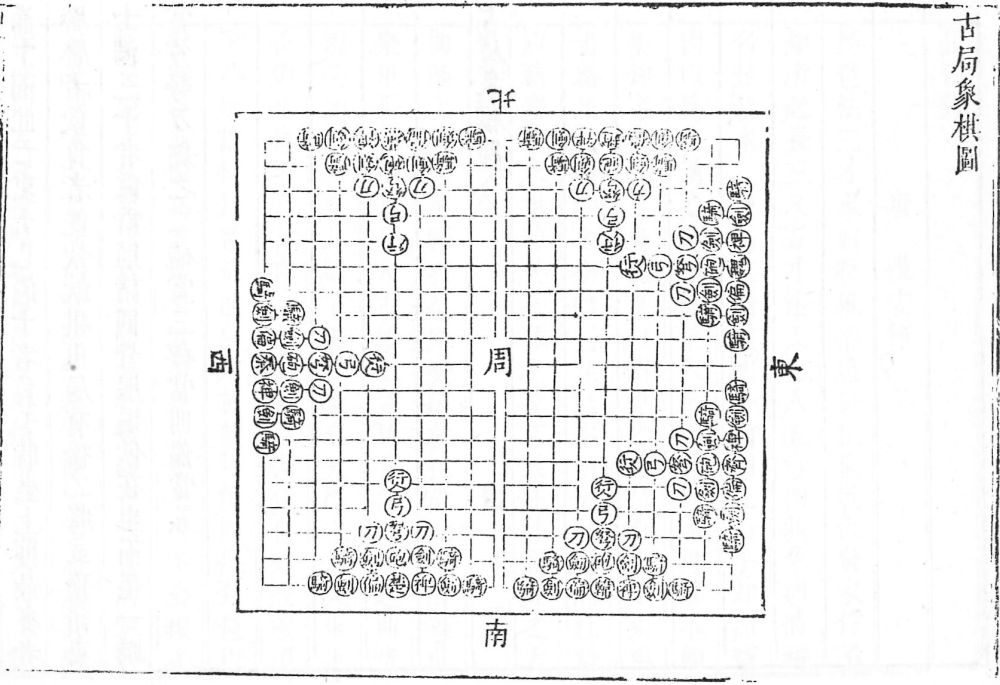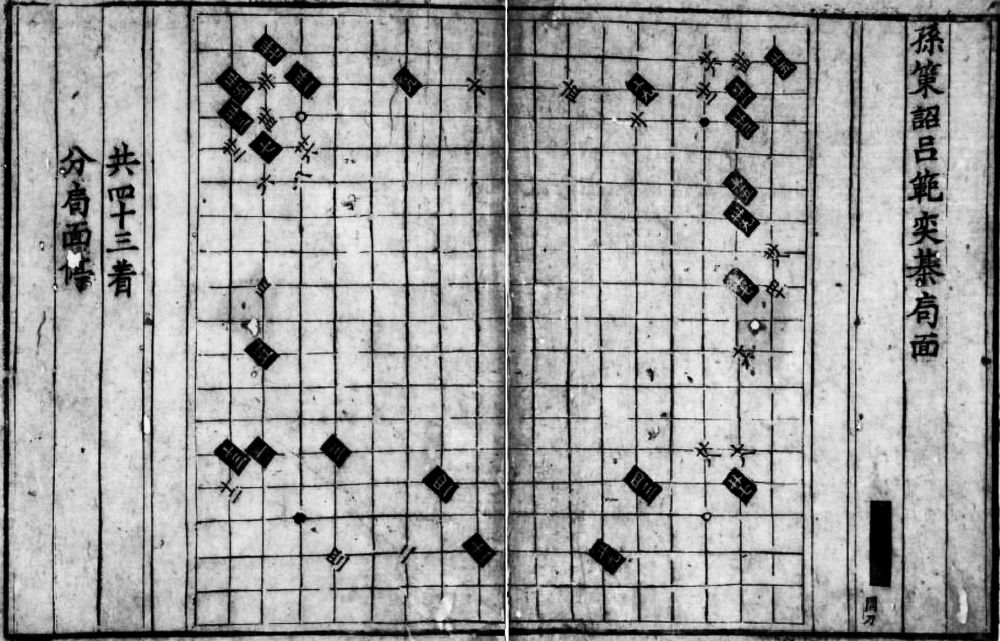Qijing 棋經 (also written 碁經 or 棊經) "Classic of chess", also known as Xuanxuan qijing 玄玄棋經 "All-mysterious book on chess", is a treatise on Chinese chess (sometimes called with the Japanese name go 碁, even if this is an entirely different game) written during the Yuan period 元 (1279-1368) by Yan Tianzhang 晏天章 (c. 1350).
The oldest surviving text on Chinese chess was found in the grottoes of Dunhuang 敦煌. The fragment is now preserved in the Museum of London (see International Dunhuang Project). This Dunhuang Qijing 敦煌《碁經》 was written by an unknown author of the Northern Zhou empire 北周 (557-581). It consists of 7 chapters, an appendix on mistakes in the game (Qi bing fa 棋病法), and a commentary Qiping yaolüe 棋評要略 written by Emperor Wu 梁武帝 (r. 502-549) of the Liang dynasty 梁 (502-557).
The transmitted Qijing consists of 13 chapters that imitate the structure of the military classic Sunzi bingfa 孫子兵法. In the preface, written by Zhang Jing 張靖, some famous chess masters are mentioned, like Liu Zhongfu 劉仲甫 (fl. 1094), Yang Zhongyin 楊中隱, Wang Wan 王琬, Sun Xian 孫侁, Guo Fan 郭范 or Li Boxiang 李伯祥. These masters also used the Qijing as a model book on planning and strategy.
The longer title of the book (during the Qing period changed to Yuanyuan qijing 元元棋經 in order to avoid the personal name of the Kangxi Emperor 康熙帝, Xuanye 玄燁) is derived from a special tactical move (qiju 棋局) called "farther and farther away" (xuan zhi you xuan 玄之又玄). It is also mentioned in contemporary chess books like the Taizong qitu 太宗棋圖 or Handan yishu zhi yu qitu 邯鄲藝術志御棋圖.
The Qijing is included in the encyclopaedia Yongle dadian 永樂大典 and the series Shuofu 說郛, Mohai jinhu 墨海金壺 and Shoushange congshu 守山閣叢書.
 |
Shuofu edition. |
The Qijing is bare text, without images. The oldest chess book with images is the book Guju xiangqi tu 古局象棋圖, authorship of which is attributed to Sima Guang 司馬光 (1019-1086). It is found in the series Shuofu. The Qijing quotes from several older and partially not transmitted books on Chinese chess, like Ban Gu's 班固 (32-92 CE) Yizhi 弈旨, Ma Rong's 馬融 (79-166 CE) Weiqi fu 圍棋賦, Pi Rixiu's 皮日休 (c. 838-c. 883) Yuanyi 原弈, Zhang Ni's 張擬 (c. 1050) Qijing shisan pian 棋經十三篇, or Liu Zhongfu's 劉仲甫 (fl. 1094) Qijue 棋訣. The last two, along with Zhang Jing's 張靖 Lun qijue yao zashuo 論棋訣要雜説 are included in the collection Wangyou qingle ji 忘憂清樂集, compiled by Li Yimin 李逸民 during the Song period.
 |
Part of Wangyou qingle ji 忘憂清樂集, Chinese National Library (Zhongguo Guojia Tushuguan 中國國家圖書館) via Library of Congress. |
There are some abbreviated versions of the Qijing, with slightly altered text, both published during the Qing period. These are Yixue huihai 弈學會海, and Yicui guanzi 弈萃官子.
| 1. | 棋局 | Basic conditions and moves |
| 2. | 得算 | Calculation |
| 3. | 權輿 | The effect of positions |
| 4. | 合戰 | Meeting in battle |
| 5. | 虛實 | Void and real |
| 6. | 自知 | Knowing oneself |
| 7. | 審局 | Considering the general situation |
| 8. | 度情 | Estimating possibilities |
| 9. | 斜正 | Insure and correct |
| 10. | 洞微 | Obscure (chances) |
| 11. | 名數 | Names and numbers |
| 12. | 品格 | Ranks and structures |
| 13. | 雜說 | Miscellaneous explanations |